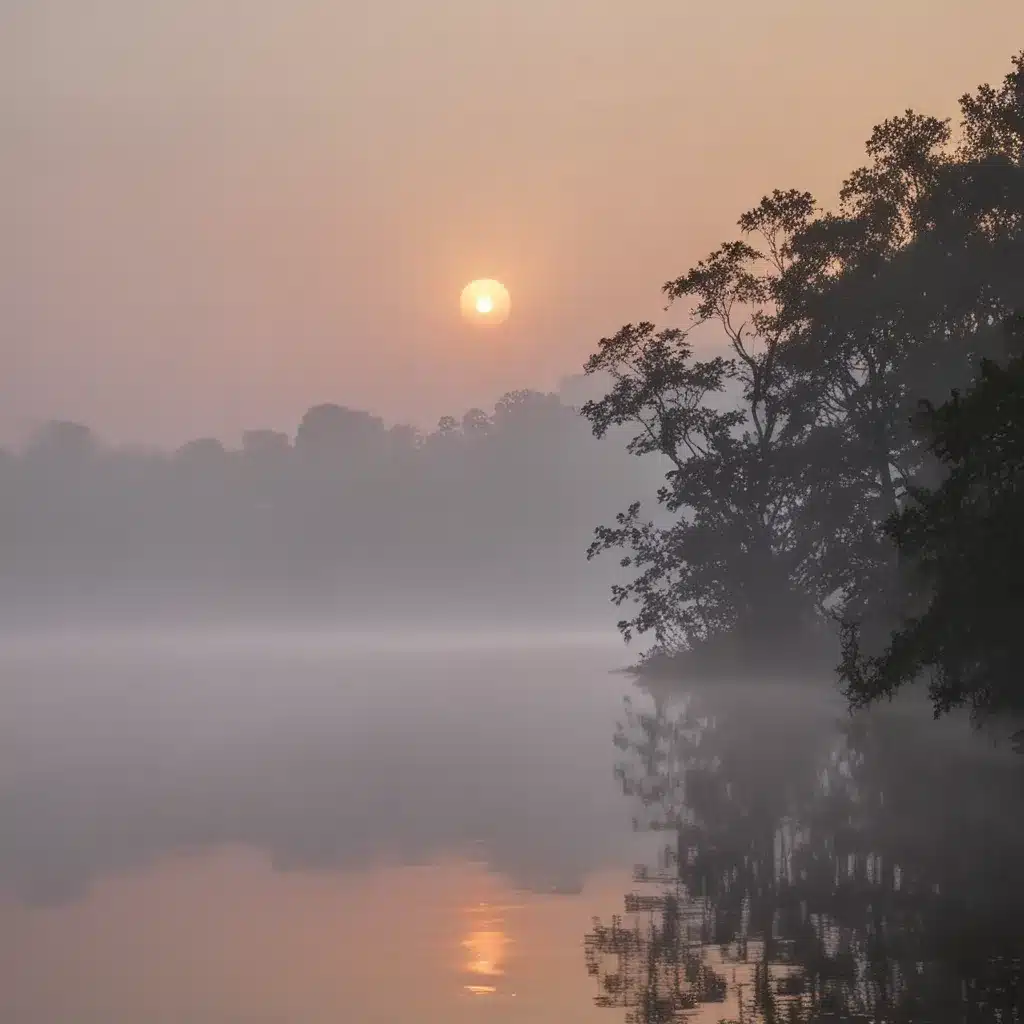
Misty Mornings at Loch Ness
As I pull up to Loch Ness Shores, the first thing I notice is the thick blanket of fog hovering over the still waters. It’s an early autumn morning, and the chill in the air makes me burrow deeper into my wool sweater. Yet, despite the cold, there’s an undeniable magic to this scene that has me transfixed.
I make my way down to the lakeshore, marveling at how the mist seems to dance across the surface. One moment, it’s a wispy veil obscuring the opposite bank; the next, it swirls upwards in ethereal tendrils, momentarily revealing the rugged hills beyond. It’s a hypnotic display, like watching the breath of some ancient, slumbering creature.
The Science Behind the Mist
As I stand there, entranced, I can’t help but wonder: what causes this mesmerizing phenomenon? Turns out, it’s all about the interplay of temperature, humidity, and the heat-storing properties of the loch itself. According to experts, the process goes something like this:
During the warmer months, the loch acts as a vast heat reservoir, soaking up the sun’s energy. But as the air temperature drops in the fall and winter, that stored heat is gradually released, causing increased evaporation at the water’s surface. This, in turn, leads to higher humidity levels right above the loch.
When the overnight temperatures plummet, as they often do in the Highlands, that moisture-rich air cools to the point where the water vapor condenses, forming the mesmerizing mist I’m witnessing. It’s a bit like watching a giant kettle come to a boil, with the hot water of the loch giving up its heat to the chilly autumn air.
An Artist’s Interpretation
This natural phenomenon has long captivated the human imagination, inspiring artists and writers alike. Take, for instance, the work of Charles Burchfield, the renowned American painter who was known for his evocative depictions of atmospheric conditions.
In his 1960 masterpiece ‘Mist Phantoms at Dawn’, Burchfield captures the surreal, almost otherworldly quality of a misty morning, with ghostly forms rising from the water and rays of golden sunlight piercing through the haze. It’s a work that perfectly encapsulates the sense of mystery and wonder that such scenes can evoke.
As I gaze out at the loch, I can’t help but feel a kinship with Burchfield and his artistic vision. The way the mist shifts and transforms, the interplay of light and shadow – it’s a dance that’s both ephemeral and captivating, a fleeting moment of natural beauty that demands to be savored.
Fishing in the Fog
Of course, this misty magic isn’t just a feast for the eyes; it can also have a profound impact on the local wildlife. According to anglers, the presence of fog can significantly affect the feeding patterns of fish in the loch.
In some cases, the cool, damp conditions seem to discourage the fish from actively hunting, causing them to hunker down until the mist clears. But in other instances, the foggy environment appears to work in the anglers’ favor, with the reduced light levels and calm waters making it easier for the fish to spot and strike at their prey.
It’s a delicate balance, and one that the experienced ghillies and fishermen around Loch Ness have learned to navigate with skill and patience. They know that the difference between a bountiful day on the water and a total bust can come down to the whims of the mist, a fickle and ever-changing force of nature.
Embracing the Fog
As the sun continues to rise, the mist begins to lift, revealing the full splendor of Loch Ness in the golden light. I watch, transfixed, as the last wisps of fog dissipate, leaving behind a serene and mirror-like surface that reflects the surrounding hills and forests.
It’s a moment of profound beauty, one that reminds me why I keep coming back to this magical place, even on the coldest and foggiest of mornings. There’s something about the way the mist interacts with the landscape, casting an ever-changing spell over the loch, that speaks to the very essence of the Highlands. It’s a reminder that nature is a force to be reckoned with, but also one to be embraced and celebrated.
As I reluctantly turn to head back to my car, I can’t help but feel a tinge of sadness that the mist has lifted. But I know that I’ll be back, eager to witness the next performance, whenever the elements conspire to summon the spectral dancers of Loch Ness. After all, that’s the beauty of this place – the way it can surprise and delight, even on the chilliest of autumn mornings.

